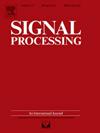一种符合临床诊断标准的房颤信号分析算法
IF 3.4
2区 工程技术
Q2 ENGINEERING, ELECTRICAL & ELECTRONIC
引用次数: 0
摘要
利用深度学习技术检测心房颤动是信号处理领域的研究热点。然而,在深度学习算法中,单纯地堆叠模块追求精度,或者压缩输入和参数追求实时性,会导致信息冗余和信息丢失之间的博弈问题。同时,深度学习得到的特征缺乏可解释性。因此,本研究提出了一种集特征提取、选择和融合于一体的T神经网络(T- net)。在T-Net中,水平路径通过多级特征重用提取心电图的多尺度信息,特征过滤器内部嵌入关注机制和投票算法来选择信息流,垂直路径采用逐通道点对点加权来捕捉多尺度信息的非线性关系。通过对包含23例患者的MIT-BIH房颤数据库进行预训练和微调,并对包含252例患者的山东省医院数据库进行测试,T-Net的准确率、特异性、灵敏度和F1评分分别为97.95%、97.01%、98.89%和97.97%。T-Net解决了信息冗余和信息不足之间的博弈问题,提取的特征具有良好的可解释性,符合临床诊断标准,具有良好的临床应用前景。本文章由计算机程序翻译,如有差异,请以英文原文为准。
An atrial fibrillation signals analysis algorithm in line with clinical diagnostic criteria
The detection of atrial fibrillation using deep learning techniques is a hot topic in the field of signal processing. However, simply stacking modules to pursue accuracy, or compressing inputs and parameters to pursue real-time performance, leads to gambling problem between information redundancy and information loss in deep learning algorithms. At the same time, the features obtained by deep learning lack interpretability. Therefore, this study proposes a T neural network (T-Net) that integrates feature extraction, selection, and fusion. In T-Net, horizontal path extracts multi-scale information of electrocardiograms through multi-level feature reuse, feature filter embeds attention mechanism and voting algorithm internally to select information flow, and vertical path uses channel-wise point-to-point weighting to capture the nonlinear relationships of multi-scale information. Through pre-training and fine-tuning on the MIT-BIH atrial fibrillation database consisting of 23 patients, and testing on the Shandong Provincial Hospital database consisting of 252 patients, T-Net achieved accuracy, specificity, sensitivity, and F1 score of 97.95 %, 97.01 %, 98.89 %, and 97.97 %, respectively. T-Net addresses the gambling problem between information redundancy and information insufficiency, and the extracted features demonstrate good interpretability consistent with clinical diagnostic criteria, showing promising clinical application prospects.
求助全文
通过发布文献求助,成功后即可免费获取论文全文。
去求助
来源期刊

Signal Processing
工程技术-工程:电子与电气
CiteScore
9.20
自引率
9.10%
发文量
309
审稿时长
41 days
期刊介绍:
Signal Processing incorporates all aspects of the theory and practice of signal processing. It features original research work, tutorial and review articles, and accounts of practical developments. It is intended for a rapid dissemination of knowledge and experience to engineers and scientists working in the research, development or practical application of signal processing.
Subject areas covered by the journal include: Signal Theory; Stochastic Processes; Detection and Estimation; Spectral Analysis; Filtering; Signal Processing Systems; Software Developments; Image Processing; Pattern Recognition; Optical Signal Processing; Digital Signal Processing; Multi-dimensional Signal Processing; Communication Signal Processing; Biomedical Signal Processing; Geophysical and Astrophysical Signal Processing; Earth Resources Signal Processing; Acoustic and Vibration Signal Processing; Data Processing; Remote Sensing; Signal Processing Technology; Radar Signal Processing; Sonar Signal Processing; Industrial Applications; New Applications.
 求助内容:
求助内容: 应助结果提醒方式:
应助结果提醒方式:


